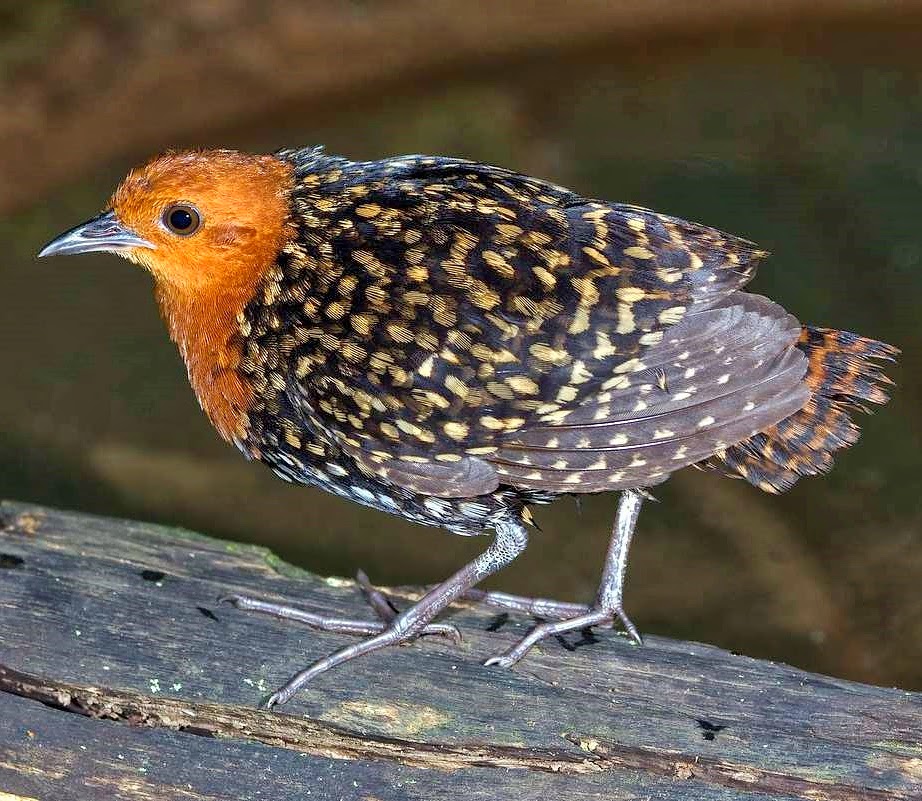The Buff-spotted Flufftail: A Hidden Gem Of Southeastern Africa
Share
The Buff-spotted Flufftail, scientifically known as Sarothrura lineata, is a captivating bird that belongs to the order Gruiformes and the family Rallidae. This elusive species is primarily found in the wetlands and grasslands of Southeastern Africa, stretching from Nyasaland to Cape Province. With its unique characteristics and behaviors, the Buff-spotted Flufftail is a fascinating subject for birdwatchers and ornithologists alike.

Taxonomy and Classification
The Buff-spotted Flufftail is classified under the following taxonomic hierarchy:
- Order: Gruiformes
- Suborder: Grues
- Family: Rallidae
- Genus: Sarothrura
- Species: Sarothrura lineata
Originally described as Aledhelia lineata by Swainson in 1838, this species has undergone various taxonomic revisions, ultimately settling into its current classification.
Physical Characteristics
The Buff-spotted Flufftail is a small, secretive bird, typically measuring around 20-25 cm in length. Its plumage is characterized by a rich brown color with buff spots, which provide excellent camouflage in its natural habitat. The bird has a short tail and a relatively long neck, which it often extends while foraging. Its legs are long and slender, adapted for wading through marshy areas.

Habitat
The Buff-spotted Flufftail thrives in a variety of wetland habitats, including marshes, reed beds, and grasslands. It prefers areas with dense vegetation, which provides cover from predators and a rich source of food. This species is primarily found in Southeastern Africa, with its range extending from Nyasaland (now Malawi) to the Cape Province in South Africa.
Diet
The diet of the Buff-spotted Flufftail mainly consists of seeds, insects, and other small invertebrates. It forages on the ground, using its long legs to navigate through dense vegetation. The bird is known to be quite secretive, often remaining hidden while it searches for food.

Behavior
Buff-spotted Flufftails are known for their elusive nature, often remaining hidden in dense cover. They are primarily crepuscular, being most active during dawn and dusk. Their calls are a series of soft, whistled notes, which can be heard during the breeding season. These birds are also known to be territorial, especially males, who will defend their breeding grounds vigorously.
Reproduction
The breeding season for the Buff-spotted Flufftail typically occurs during the rainy season when food is abundant. The female builds a nest on the ground, often hidden among dense vegetation. She lays a clutch of 3-6 eggs, which both parents help to incubate. After hatching, the chicks are precocial, meaning they are relatively mature and mobile, allowing them to leave the nest shortly after birth.

Conservation Status
Currently, the Buff-spotted Flufftail is not considered endangered, but its habitat is threatened by agricultural expansion and wetland drainage. Conservation efforts are essential to protect the wetlands that serve as critical habitats for this species and many others. Monitoring populations and habitat conditions will be vital for ensuring the long-term survival of the Buff-spotted Flufftail.
Interesting Facts
- The Buff-spotted Flufftail is often referred to as a "ghost" bird due to its elusive nature and preference for dense cover.
- It plays a crucial role in its ecosystem by helping to control insect populations and dispersing seeds.
- Birdwatchers often find it challenging to spot this species, making any sighting a rewarding experience.
Birdwatching Tips
For those interested in observing the Buff-spotted Flufftail, here are some tips:
- Visit Wetlands: Focus on wetlands, marshes, and grasslands in Southeastern Africa, particularly during the early morning or late afternoon.
- Be Patient: These birds are secretive, so patience is key. Stay quiet and still to increase your chances of spotting one.
- Listen for Calls: Familiarize yourself with their calls, as this can help locate them even if they remain hidden.
- Use Binoculars: A good pair of binoculars will enhance your viewing experience, allowing you to observe their behavior from a distance without disturbing them.
The Buff-spotted Flufftail is a remarkable bird that embodies the beauty and complexity of Southeastern Africa's ecosystems. Its secretive nature and unique adaptations make it a fascinating subject for study and observation. By understanding and protecting its habitat, we can ensure that future generations will also have the opportunity to appreciate this hidden gem of the avian world.